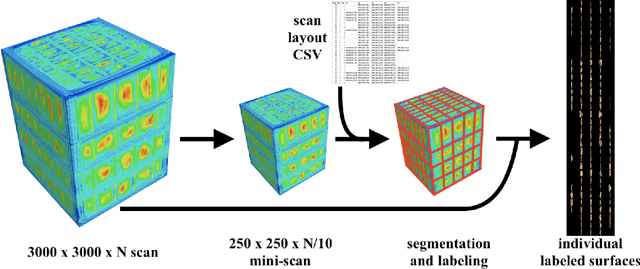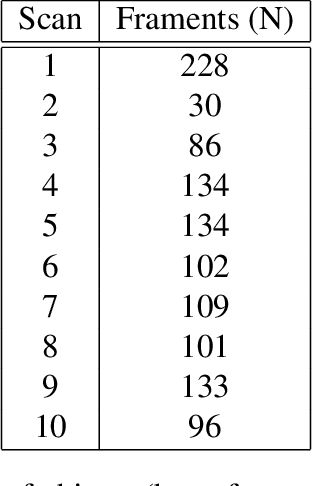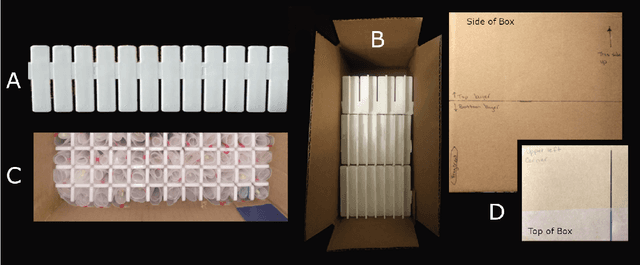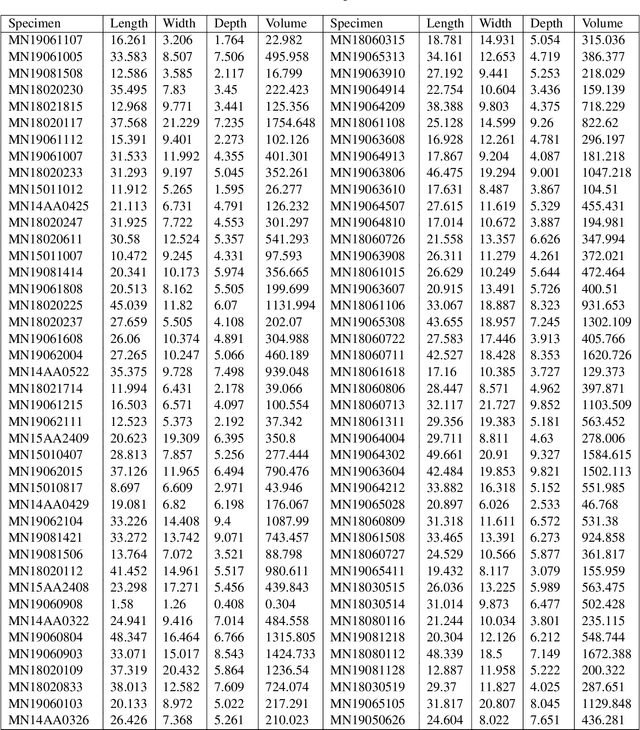Riley C. W. O'Neill
En masse scanning and automated surfacing of small objects using Micro-CT
Oct 09, 2024



Abstract:Modern archaeological methods increasingly utilize 3D virtual representations of objects, computationally intensive analyses, high resolution scanning, large datasets, and machine learning. With higher resolution scans, challenges surrounding computational power, memory, and file storage quickly arise. Processing and analyzing high resolution scans often requires memory-intensive workflows, which are infeasible for most computers and increasingly necessitate the use of super-computers or innovative methods for processing on standard computers. Here we introduce a novel protocol for en-masse micro-CT scanning of small objects with a {\em mostly-automated} processing workflow that functions in memory-limited settings. We scanned 1,112 animal bone fragments using just 10 micro-CT scans, which were post-processed into individual PLY files. Notably, our methods can be applied to any object (with discernible density from the packaging material) making this method applicable to a variety of inquiries and fields including paleontology, geology, electrical engineering, and materials science. Further, our methods may immediately be adopted by scanning institutes to pool customer orders together and offer more affordable scanning. The work presented herein is part of a larger program facilitated by the international and multi-disciplinary research consortium known as Anthropological and Mathematical Analysis of Archaeological and Zooarchaeological Evidence (AMAAZE). AMAAZE unites experts in anthropology, mathematics, and computer science to develop new methods for mass-scale virtual archaeological research. Overall, our new scanning method and processing workflows lay the groundwork and set the standard for future mass-scale, high resolution scanning studies.
Two Online Map Matching Algorithms Based on Analytic Hierarchy Process and Fuzzy Logic
Feb 19, 2024



Abstract:Our aim of this paper is to develop new map matching algorithms and to improve upon previous work. We address two key approaches: Analytic Hierarchy Process (AHP) map matching and fuzzy logic map matching. AHP is a decision-making method that combines mathematical analysis with human judgment, and fuzzy logic is an approach to computing based on the degree of truth and aims at modeling the imprecise modes of reasoning from 0 to 1 rather than the usual boolean logic. Of these algorithms, the way of our applying AHP to map matching is newly developed in this paper, meanwhile, our application of fuzzy logic to map matching is mostly the same as existing research except for some small changes. Because of the common characteristic that both methods are designed to handle imprecise information and simplicity for implementation, we decided to use these methods.
 Add to Chrome
Add to Chrome Add to Firefox
Add to Firefox Add to Edge
Add to Edge